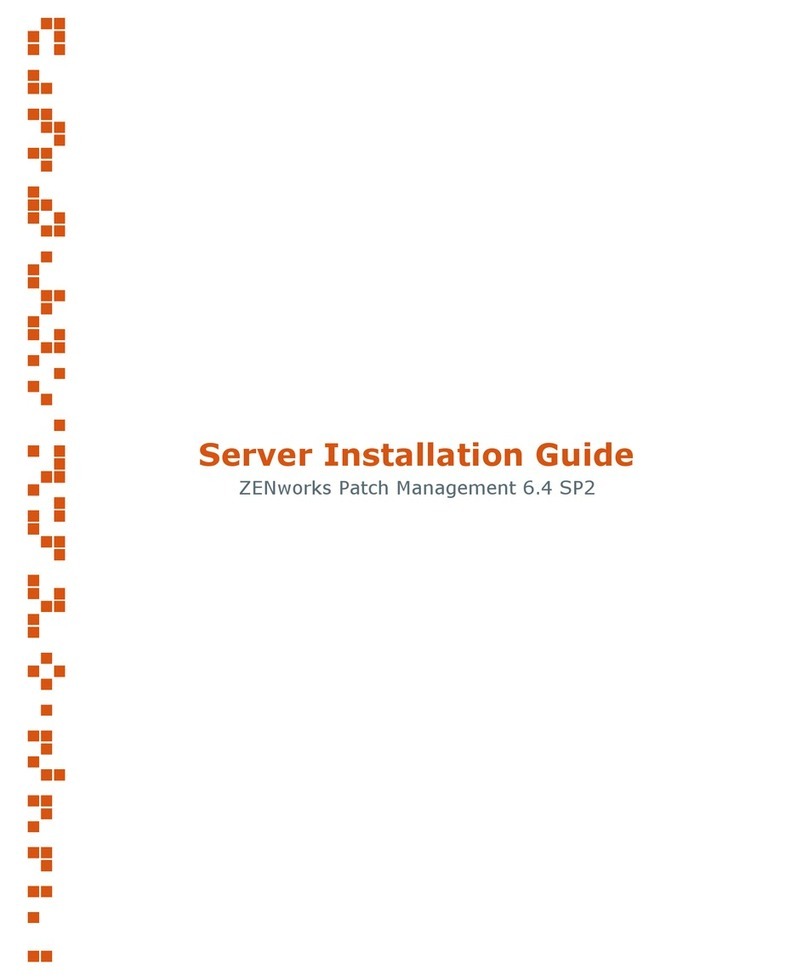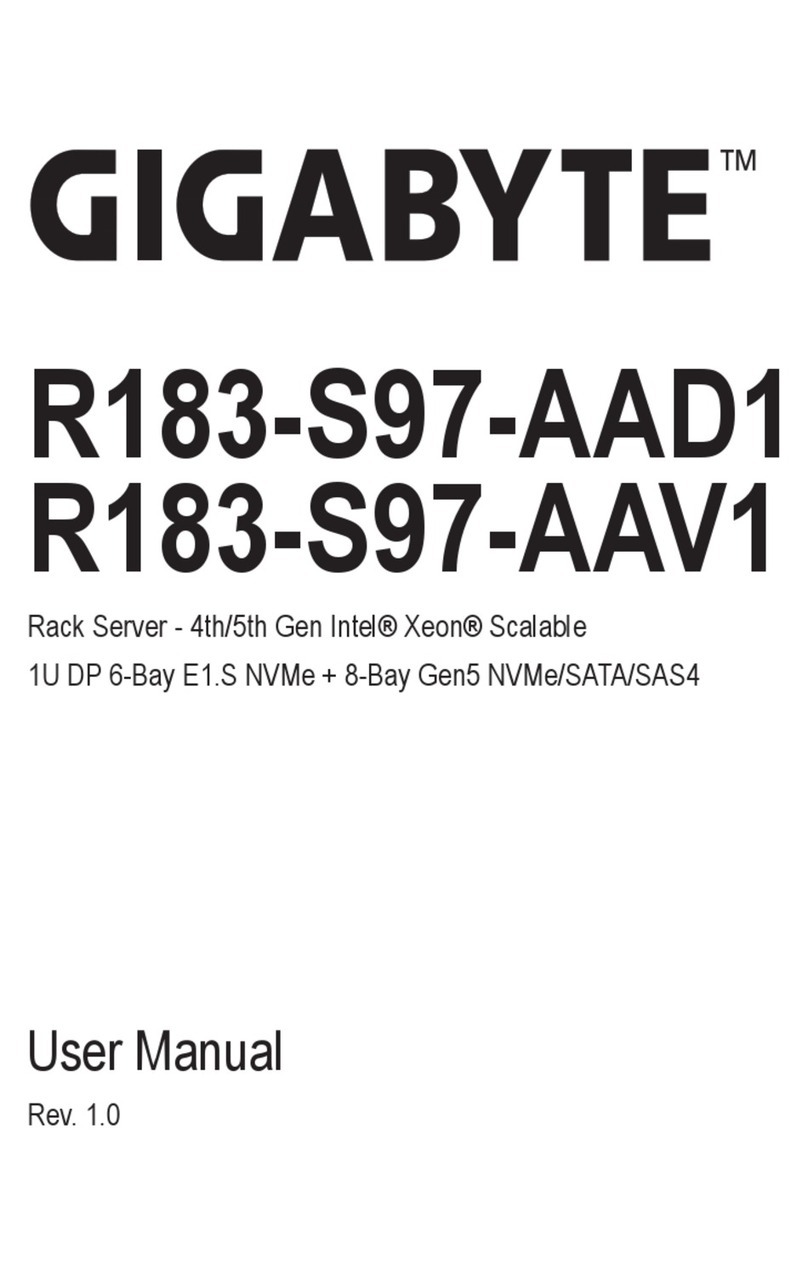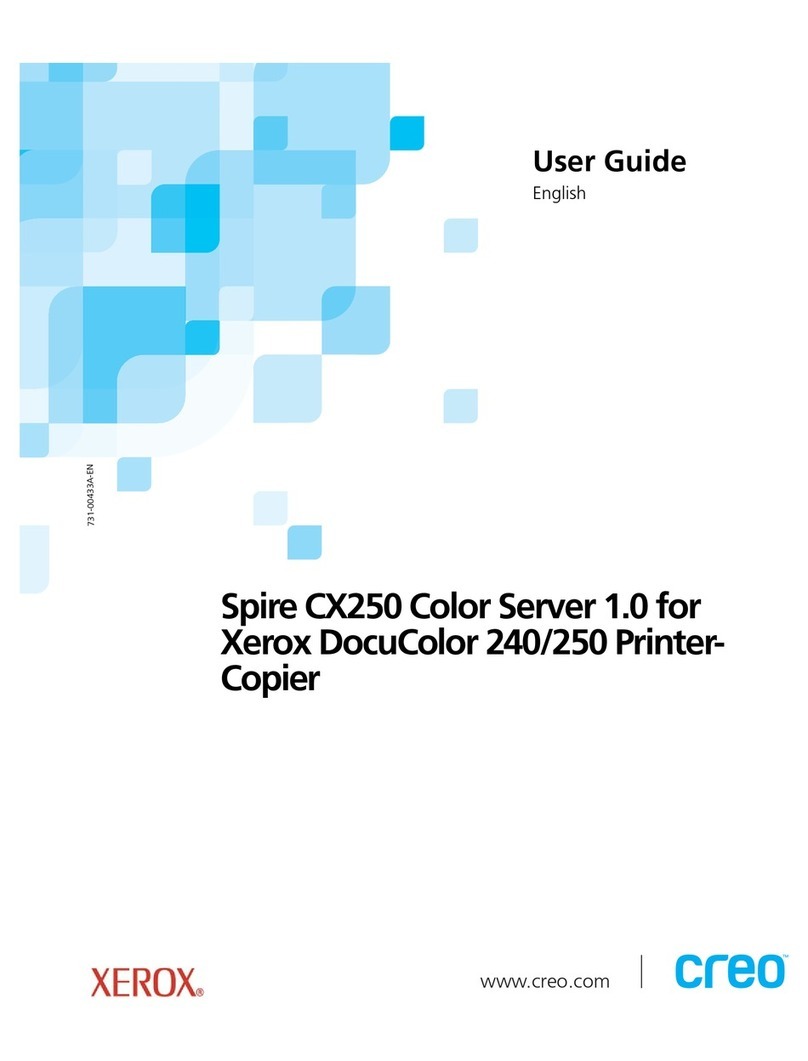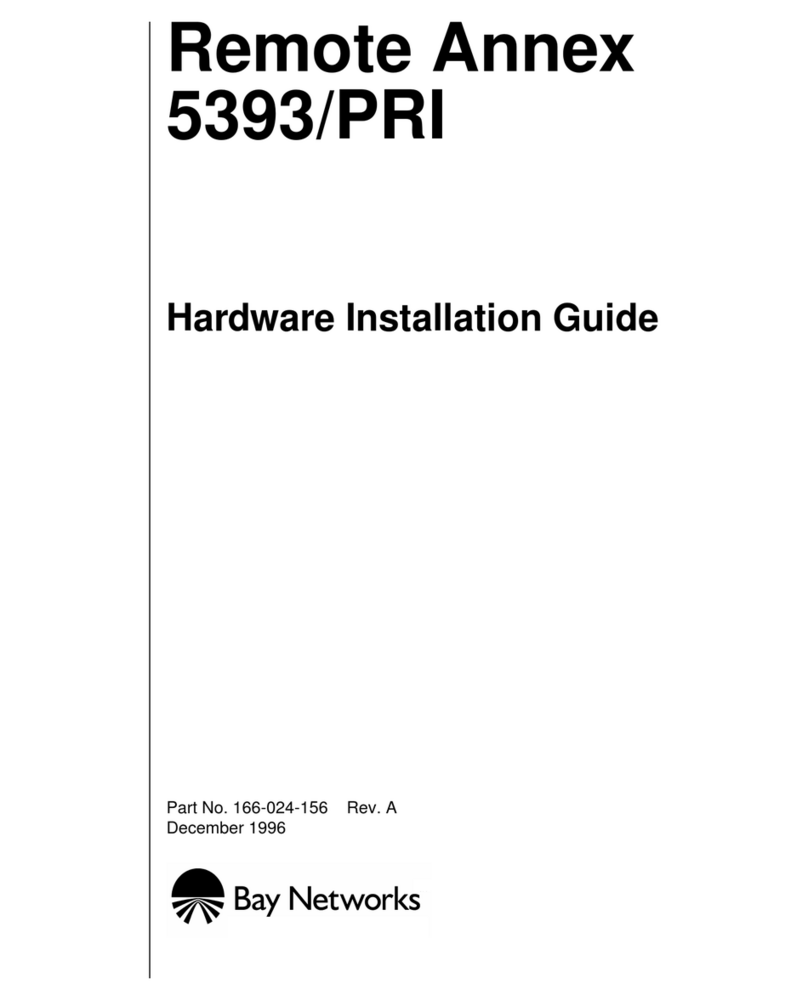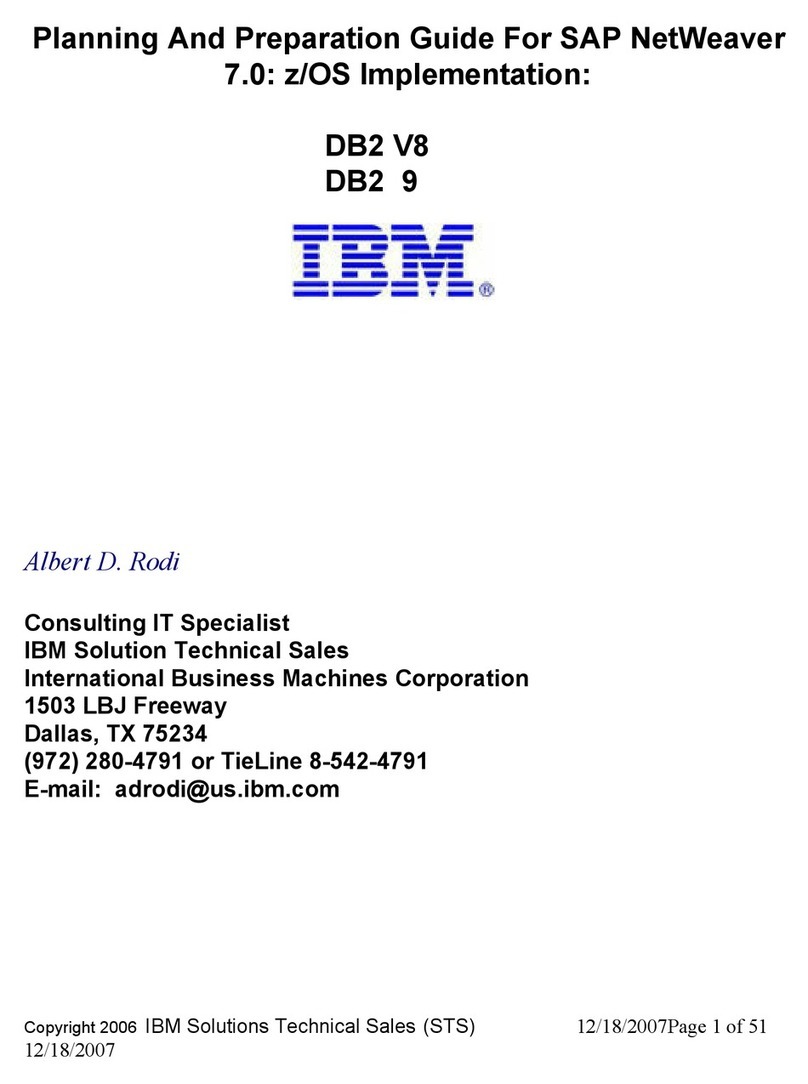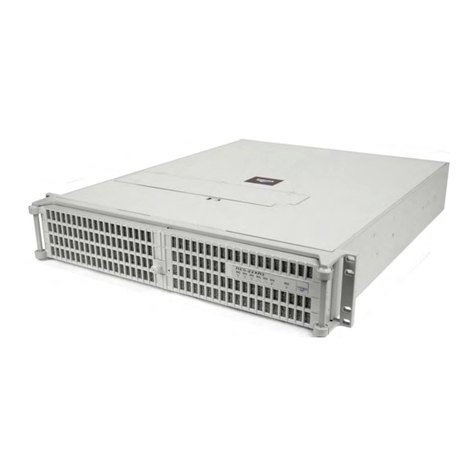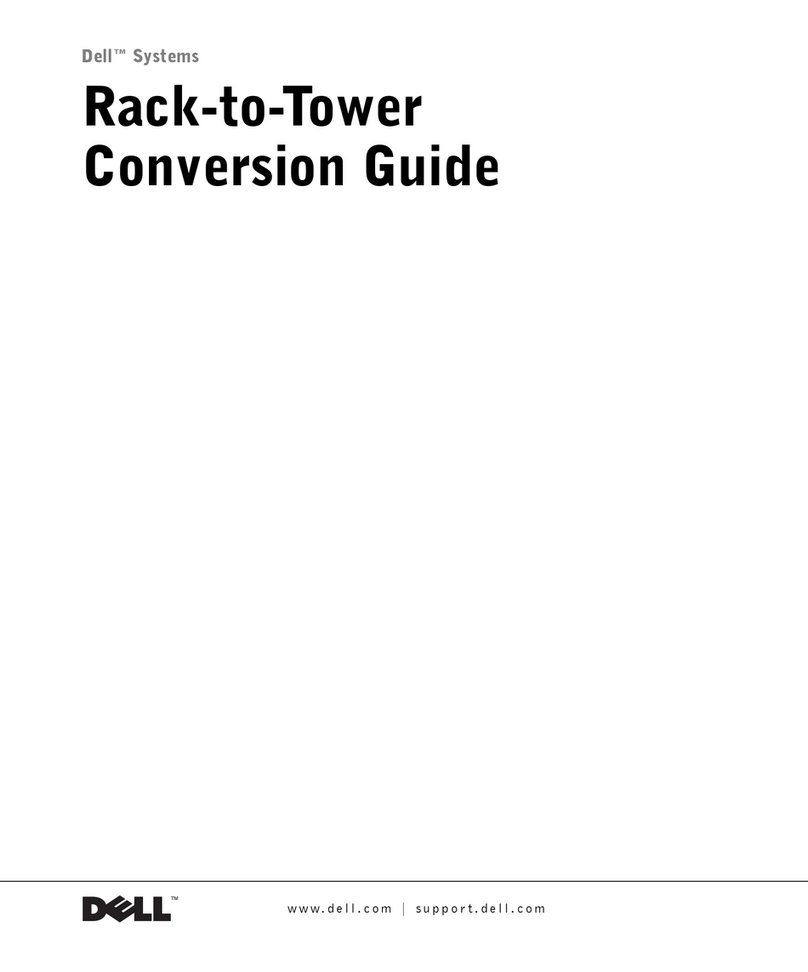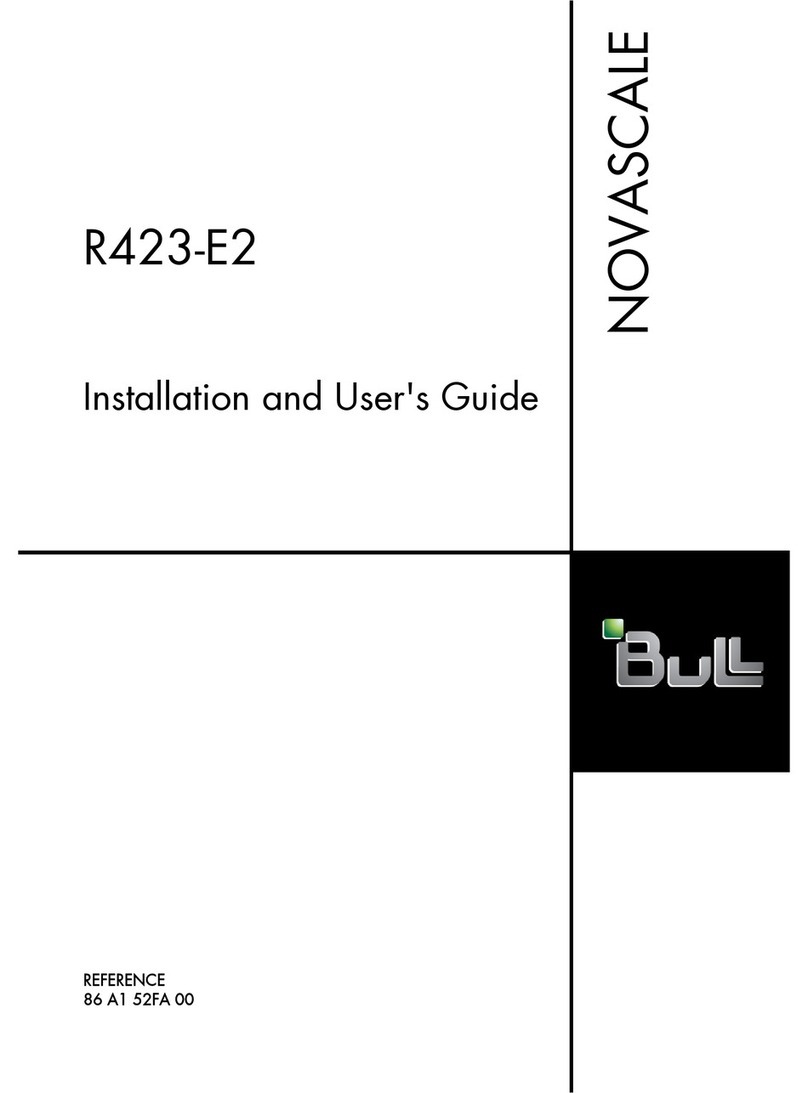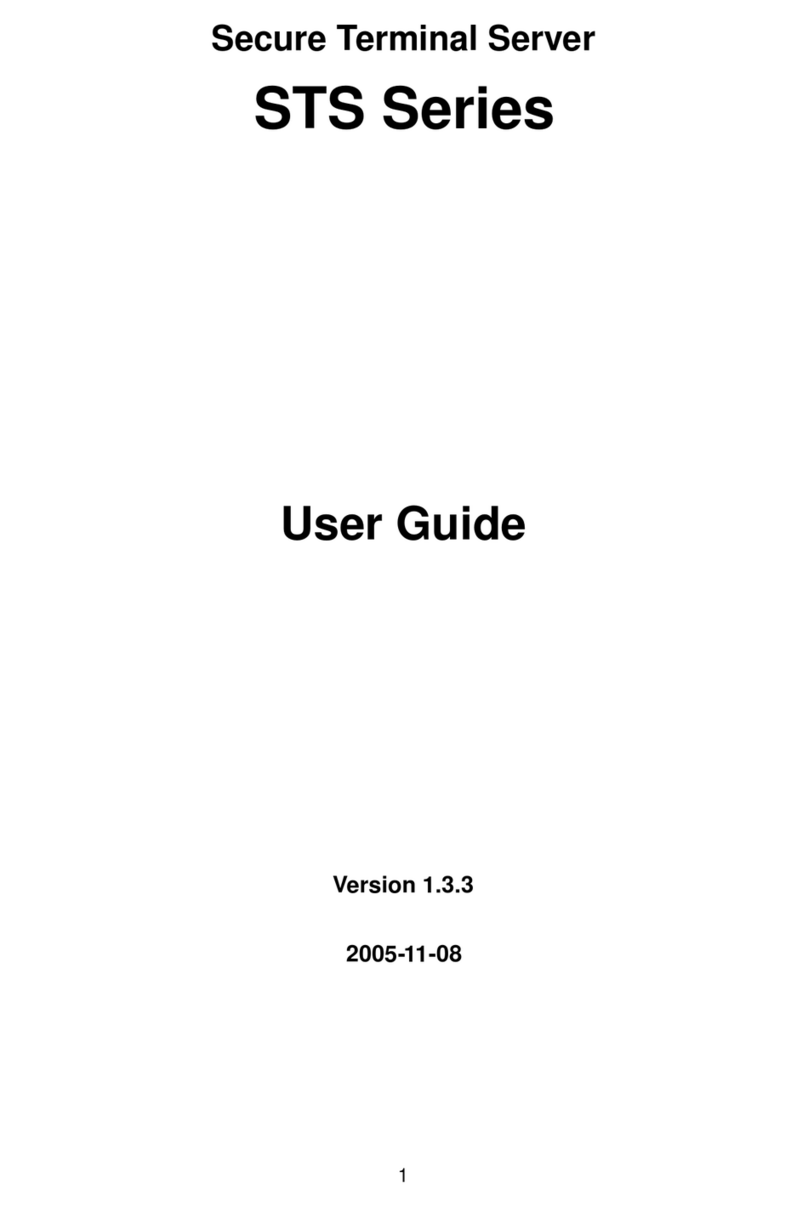Novell NETWARE 6 User manual

August 29, 2001
Novell Confidential
Internetwork Packet Exchange
NetWare
®
6
INTERNETWORK PACKET EXCHANGE
www.novell.com
Novell

Internetwork Packet Exchange
103-000176-001
August 29, 2001
Novell Confidential
Manual 99a38 July 17, 2001
Legal Notices
Novell, Inc. makes no representations or warranties with respect to the contents or use of this documentation, and
specifically disclaims any express or implied warranties of merchantability or fitness for any particular purpose.
Further, Novell, Inc. reserves the right to revise this publication and to make changes to its content, at any time,
without obligation to notify any person or entity of such revisions or changes.
Further, Novell, Inc. makes no representations or warranties with respect to any software, and specifically disclaims
any express or implied warranties of merchantability or fitness for any particular purpose. Further, Novell, Inc.
reserves the right to make changes to any and all parts of Novell software, at any time, without any obligation to
notify any person or entity of such changes.
This product may require export authorization from the U.S. Department of Commerce prior to exporting from the
U.S. or Canada.
Copyright © 1994-1995, 2001 Novell, Inc. All rights reserved. No part of this publication may be reproduced,
photocopied, stored on a retrieval system, or transmitted without the express written consent of the publisher.
U.S. Patent No. 5,157,663; 5,349,642; 5,455,932; 5,553,139; 5,553,143; 5,572,528; 5,594,863; 5,608,903; 5,633,931; 5,652,859;
5,671,414; 5,677,851; 5,692,129; 5,701,459; 5,717,912; 5,758,069; 5,758,344; 5,781,724; 5,781,724; 5,781,733; 5,784,560;
5,787,439; 5,818,936; 5,828,882; 5,832,274; 5,832,275; 5,832,483; 5,832,487; 5,850,565; 5,859,978; 5,870,561; 5,870,739;
5,873,079; 5,878,415; 5,878,434; 5,884,304; 5,893,116; 5,893,118; 5,903,650; 5,903,720; 5,905,860; 5,910,803; 5,913,025;
5,913,209; 5,915,253; 5,925,108; 5,933,503; 5,933,826; 5,946,002; 5,946,467; 5,950,198; 5,956,718; 5,956,745; 5,964,872;
5,974,474; 5,983,223; 5,983,234; 5,987,471; 5,991,771; 5,991,810; 6,002,398; 6,014,667; 6,015,132; 6,016,499; 6,029,247;
6,047,289; 6,052,724; 6,061,743; 6,065,017; 6,094,672; 6,098,090; 6,105,062; 6,105,132; 6,115,039; 6,119,122; 6,144,959;
6,151,688; 6,157,925; 6,167,393; 6,173,289; 6,192,365; 6,216,123; 6,219,652; 6,229,809. Patents Pending.
Novell, Inc.
1800 South Novell Place
Provo, UT 84606
U.S.A.
www.novell.com
Internetwork Packet Exchange
October 2001
103-000176-001
Online Documentation: To access the online documentation for this and other Novell products, and to get
updates, see www.novell.com/documentation.

Internetwork Packet Exchange
103-000176-001
August 29, 2001
Novell Confidential
Manual 99a38 July 17, 2001
Novell Trademarks
ConsoleOne is a trademark of Novell, Inc.
Internetwork Packet Exchange and IPX are trademarks of Novell, Inc.
IPX/SPX is a trademark of Novell, Inc.
IPXWAN is a trademark of Novell, Inc.
MacIPX is a registered trademark of Novell, Inc., in the United States and other countries.
NetWare is a registered trademark of Novell, Inc., in the United States and other countries.
NetWare/IP is a trademark of Novell, Inc.
NetWare Core Protocol and NCP are trademarks of Novell, Inc.
NetWare Loadable Module and NLM are trademarks of Novell, Inc.
NetWare Mobile IPX is a trademark of Novell, Inc.
NetWare MultiProtocol Router is a trademark of Novell, Inc.
Novell is a registered trademark of Novell, Inc., in the United States and other countries.
Novell Client is a trademark of Novell, Inc.
Novell Directory Services and NDS are registered trademarks of Novell, Inc., in the United States and other
countries.
Packet Burst is a trademark of Novell, Inc.
Sequenced Packet Exchange and SPX are trademarks of Novell, Inc.
System Fault Tolerance, SFT, and SFT III are trademarks of Novell, Inc.
Third-Party Trademarks
All third-party trademarks are the property of their respective owners.

Internetwork Packet Exchange
103-000176-001
August 29, 2001
Novell Confidential
Manual 99a38 July 17, 2001

Contents 5
Internetwork Packet Exchange
103-000176-001
August 29, 2001
Novell Confidential
Contents
Manual 99a38 July 17, 2001
About This Guide 9
Documentation Conventions . . . . . . . . . . . . . . . . . . . . . . . . . . . . . . . . . . . . . 9
1Understanding 11
The IPX Protocol . . . . . . . . . . . . . . . . . . . . . . . . . . . . . . . . . . . . . . . . . . 12
IPX Packet Structure . . . . . . . . . . . . . . . . . . . . . . . . . . . . . . . . . . . . . . . . 13
IPX Addressing. . . . . . . . . . . . . . . . . . . . . . . . . . . . . . . . . . . . . . . . . . . 17
Network Number . . . . . . . . . . . . . . . . . . . . . . . . . . . . . . . . . . . . . . . . 17
Node Number. . . . . . . . . . . . . . . . . . . . . . . . . . . . . . . . . . . . . . . . . . 19
Socket Number . . . . . . . . . . . . . . . . . . . . . . . . . . . . . . . . . . . . . . . . . 20
How IPX Routing Works . . . . . . . . . . . . . . . . . . . . . . . . . . . . . . . . . . . . . . 21
When a Workstation Sends an IPX Packet. . . . . . . . . . . . . . . . . . . . . . . . . . . 21
When a Router Receives an IPX Packet . . . . . . . . . . . . . . . . . . . . . . . . . . . . 22
When a Router Forwards an IPX Packet . . . . . . . . . . . . . . . . . . . . . . . . . . . . 23
IPX Operation over WAN Links . . . . . . . . . . . . . . . . . . . . . . . . . . . . . . . . . . 24
Call Types . . . . . . . . . . . . . . . . . . . . . . . . . . . . . . . . . . . . . . . . . . . . . 25
Permanent Calls . . . . . . . . . . . . . . . . . . . . . . . . . . . . . . . . . . . . . . . . 25
On-Demand Calls. . . . . . . . . . . . . . . . . . . . . . . . . . . . . . . . . . . . . . . . 25
Routed On-Demand Calls . . . . . . . . . . . . . . . . . . . . . . . . . . . . . . . . . . . 26
Routing Types . . . . . . . . . . . . . . . . . . . . . . . . . . . . . . . . . . . . . . . . . . . 27
Static Routes and Services . . . . . . . . . . . . . . . . . . . . . . . . . . . . . . . . . . . . 28
Watchdog Packet Spoofing . . . . . . . . . . . . . . . . . . . . . . . . . . . . . . . . . . . . 30
Header Compression. . . . . . . . . . . . . . . . . . . . . . . . . . . . . . . . . . . . . . . . 31
Compression Slots . . . . . . . . . . . . . . . . . . . . . . . . . . . . . . . . . . . . . . . 32
Compression Packet Types . . . . . . . . . . . . . . . . . . . . . . . . . . . . . . . . . . 33
IPX Route Aggregation. . . . . . . . . . . . . . . . . . . . . . . . . . . . . . . . . . . . . . . 34
Introducing Aggregated Routes into NLSP. . . . . . . . . . . . . . . . . . . . . . . . . . . . . 35
Consistent Use of Routers that Support Route Aggregation . . . . . . . . . . . . . . . . . . . . 36
Interaction with SAP . . . . . . . . . . . . . . . . . . . . . . . . . . . . . . . . . . . . . . . . 36
Metrics Used with Aggregated Routes . . . . . . . . . . . . . . . . . . . . . . . . . . . . . . . 36
IPX Address Mapping Gateway . . . . . . . . . . . . . . . . . . . . . . . . . . . . . . . . . . 37
2Planning 41
IPX Configuration Decisions . . . . . . . . . . . . . . . . . . . . . . . . . . . . . . . . . . . . 41
NetWare Mobile IPX Configuration Decisions . . . . . . . . . . . . . . . . . . . . . . . . . . . 45
Mobile Client Driver Selection . . . . . . . . . . . . . . . . . . . . . . . . . . . . . . . . . 45
Planning for Efficient Use of Your Mobile Client . . . . . . . . . . . . . . . . . . . . . . . . 45
Deciding Where to Locate a Home Router . . . . . . . . . . . . . . . . . . . . . . . . . . . 45
Contents

6Internetwork Packet Exchange
Internetwork Packet Exchange
103-000176-001
August 29, 2001
Novell Confidential
Manual 99a38 July 17, 2001
3Setting Up 51
Turning Off IPX Packet Forwarding . . . . . . . . . . . . . . . . . . . . . . . . . . . . . . . . 51
How to Turn Off IPX Packet Forwarding . . . . . . . . . . . . . . . . . . . . . . . . . . . . 52
Configuring Static Routes and Services . . . . . . . . . . . . . . . . . . . . . . . . . . . . . . 53
Configuring Static Routes and Services with NIASCFG . . . . . . . . . . . . . . . . . . . . 54
Configuring Static Routes and Services with STATICON . . . . . . . . . . . . . . . . . . . 56
Configuring Watchdog Spoofing. . . . . . . . . . . . . . . . . . . . . . . . . . . . . . . . . . 65
How to Configure Watchdog Spoofing on an Interface . . . . . . . . . . . . . . . . . . . . 66
How to Configure Watchdog Spoofing for Call Destinations. . . . . . . . . . . . . . . . . . 66
Configuring Routed or Static On-Demand Calls. . . . . . . . . . . . . . . . . . . . . . . . . . 67
How to Configure Routed or Static On-Demand Calls . . . . . . . . . . . . . . . . . . . . . 68
Configuring IPX and NCP Header Compression . . . . . . . . . . . . . . . . . . . . . . . . . 69
How to Configure IPX and NCP Header Compression on an Interface . . . . . . . . . . . . 70
How to Configure IPX and NCP Header Compression per Call Destination. . . . . . . . . . 71
Configuring NLSP . . . . . . . . . . . . . . . . . . . . . . . . . . . . . . . . . . . . . . . . . 72
How to Configure NLSP . . . . . . . . . . . . . . . . . . . . . . . . . . . . . . . . . . . . 74
How to Change the LSP Size . . . . . . . . . . . . . . . . . . . . . . . . . . . . . . . . . 76
Configuring RIP and SAP . . . . . . . . . . . . . . . . . . . . . . . . . . . . . . . . . . . . . 77
How to Configure RIP . . . . . . . . . . . . . . . . . . . . . . . . . . . . . . . . . . . . . 78
How to Configure SAP . . . . . . . . . . . . . . . . . . . . . . . . . . . . . . . . . . . . . 80
Accepting and Advertising Services from a Network Not Listed in the Routing Information Table
82
Proxying a NetWare File Server . . . . . . . . . . . . . . . . . . . . . . . . . . . . . . . . . . 84
How to Proxy a NetWare File Server . . . . . . . . . . . . . . . . . . . . . . . . . . . . . 84
How to Check the Proxy Configuration . . . . . . . . . . . . . . . . . . . . . . . . . . . . 85
Configuring the IPX Address Mapping Gateway . . . . . . . . . . . . . . . . . . . . . . . . . 86
Configuring IPX Route Aggregation . . . . . . . . . . . . . . . . . . . . . . . . . . . . . . . . 88
Controlling the Propagation of Type 20 Packets . . . . . . . . . . . . . . . . . . . . . . . . . 89
How to Control Propagation of Type 20 Packets . . . . . . . . . . . . . . . . . . . . . . . 90
Changing the Hop Count Limit for IPX Packets . . . . . . . . . . . . . . . . . . . . . . . . . . 90
How to Change the Hop Count Limit . . . . . . . . . . . . . . . . . . . . . . . . . . . . . 91
Balancing Traffic Loads over Equal-Cost Routes . . . . . . . . . . . . . . . . . . . . . . . . . 92
How to Balance Traffic Loads over Equal-Cost Routes . . . . . . . . . . . . . . . . . . . . 93
Configuring SPX Connection Parameters . . . . . . . . . . . . . . . . . . . . . . . . . . . . . 94
How to Configure SPX Connection Parameters . . . . . . . . . . . . . . . . . . . . . . . . 95
Setting Delay and Throughput for a Slow Link . . . . . . . . . . . . . . . . . . . . . . . . . . 95
How to Set Delay and Throughput for a Slow Link . . . . . . . . . . . . . . . . . . . . . . 97
Configuring IPX for Wireless Connectivity. . . . . . . . . . . . . . . . . . . . . . . . . . . . . 97
Configuring a Home Router . . . . . . . . . . . . . . . . . . . . . . . . . . . . . . . . . . 98
Configuring a Mobile Client . . . . . . . . . . . . . . . . . . . . . . . . . . . . . . . . . . 99
Configuring the MacIPX Gateway . . . . . . . . . . . . . . . . . . . . . . . . . . . . . . . . . 105
Configuring and Binding the Gateway Driver . . . . . . . . . . . . . . . . . . . . . . . . . 107
Restricting Gateway Service to Selected Networks . . . . . . . . . . . . . . . . . . . . . . 109

Contents 7
Internetwork Packet Exchange
103-000176-001
August 29, 2001
Novell Confidential
Manual 99a38 July 17, 2001
4Managing 111
Using the IPXCON Utility. . . . . . . . . . . . . . . . . . . . . . . . . . . . . . . . . . . . . 111
Using the IPXPING Utility on the Server . . . . . . . . . . . . . . . . . . . . . . . . . . . . . 112
Using the IPXPING Utility on the Workstation . . . . . . . . . . . . . . . . . . . . . . . . . . 113
Syntax . . . . . . . . . . . . . . . . . . . . . . . . . . . . . . . . . . . . . . . . . . . . 113
Parameters . . . . . . . . . . . . . . . . . . . . . . . . . . . . . . . . . . . . . . . . . . 113
Example . . . . . . . . . . . . . . . . . . . . . . . . . . . . . . . . . . . . . . . . . . . 114
Using the SPFCON Utility . . . . . . . . . . . . . . . . . . . . . . . . . . . . . . . . . . . . 114
Main Window . . . . . . . . . . . . . . . . . . . . . . . . . . . . . . . . . . . . . . . . . 115
Interfaces Window . . . . . . . . . . . . . . . . . . . . . . . . . . . . . . . . . . . . . . 115
Connections Window . . . . . . . . . . . . . . . . . . . . . . . . . . . . . . . . . . . . . 115
Spoofing Statistics Window. . . . . . . . . . . . . . . . . . . . . . . . . . . . . . . . . . 115
Viewing NetWare IPX Configuration Information. . . . . . . . . . . . . . . . . . . . . . . . . 116
Determining Whether a Remote IPX Router Is Reachable . . . . . . . . . . . . . . . . . . . 116
Determining Which IPX Services Are Reachable . . . . . . . . . . . . . . . . . . . . . . . . 117
Checking an IPX Network for Inactive Routers . . . . . . . . . . . . . . . . . . . . . . . . . 117
Checking the IPX Routing Table . . . . . . . . . . . . . . . . . . . . . . . . . . . . . . . . . 117
Checking an IPX Network for Duplicate Network Numbers . . . . . . . . . . . . . . . . . . . 118
Checking an IPX Network for Duplicate System IDs . . . . . . . . . . . . . . . . . . . . . . . 118
Determining Where NLSP Is Running in Your Network . . . . . . . . . . . . . . . . . . . . . 119
Finding NLSP Routers with Insufficient Memory . . . . . . . . . . . . . . . . . . . . . . . . . 119
Finding the Designated Router on a LAN . . . . . . . . . . . . . . . . . . . . . . . . . . . . 120
Monitoring Error Counters . . . . . . . . . . . . . . . . . . . . . . . . . . . . . . . . . . . . 121
Viewing the MacIPX Gateway Configuration. . . . . . . . . . . . . . . . . . . . . . . . . . . 122
Viewing MacIPX Gateway Statistics . . . . . . . . . . . . . . . . . . . . . . . . . . . . . . . 122
5Troubleshooting 125
Troubleshooting Tools . . . . . . . . . . . . . . . . . . . . . . . . . . . . . . . . . . . . . . 125
IPXCON . . . . . . . . . . . . . . . . . . . . . . . . . . . . . . . . . . . . . . . . . . . 125
System Console Commands . . . . . . . . . . . . . . . . . . . . . . . . . . . . . . . . . 126
Configuration Tips . . . . . . . . . . . . . . . . . . . . . . . . . . . . . . . . . . . . . . . . 127
Troubleshooting Checkpoints . . . . . . . . . . . . . . . . . . . . . . . . . . . . . . . . . . 127
IPX Checkpoints . . . . . . . . . . . . . . . . . . . . . . . . . . . . . . . . . . . . . . . 127
IPX Connectivity Problems (Duplicate ID or Network Number) . . . . . . . . . . . . . . . 129
NLSP Checkpoints . . . . . . . . . . . . . . . . . . . . . . . . . . . . . . . . . . . . . . 131
Common Problems. . . . . . . . . . . . . . . . . . . . . . . . . . . . . . . . . . . . . . . . 131
Login Times Out . . . . . . . . . . . . . . . . . . . . . . . . . . . . . . . . . . . . . . . 132
Load Balancing over IPX Is Not Working . . . . . . . . . . . . . . . . . . . . . . . . . . . 133
Only One IPX Packet Is Sent and Received . . . . . . . . . . . . . . . . . . . . . . . . . 133
IPXCON Counters Are Increasing (Duplicate ID or Network Number) . . . . . . . . . . . . 133
Error Messages Are Displayed (Duplicate ID or Network Number) . . . . . . . . . . . . . 134
NLSP Decision Process Is Running Frequently (Duplicate System ID) . . . . . . . . . . . 135
Other Router Names Are Not Displayed . . . . . . . . . . . . . . . . . . . . . . . . . . . 135
System Frequently Appears and Disappears on the LAN . . . . . . . . . . . . . . . . . . 135

8Internetwork Packet Exchange
Internetwork Packet Exchange
103-000176-001
August 29, 2001
Novell Confidential
Manual 99a38 July 17, 2001
Multiple Systems on a LAN Become Unreachable Intermittently . . . . . . . . . . . . . . . 138
Connectivity Across a Point-to-Point Link Has Been Lost . . . . . . . . . . . . . . . . . . . 139
An NLSP Server on a LAN Cannot Be Accessed . . . . . . . . . . . . . . . . . . . . . . . 140
LAN Is Partitioned . . . . . . . . . . . . . . . . . . . . . . . . . . . . . . . . . . . . . . . 141
No Communication Occurs between Two Networks. . . . . . . . . . . . . . . . . . . . . . 142
Services Are Inaccessible in the Area . . . . . . . . . . . . . . . . . . . . . . . . . . . . . 143
Number of Routes and Services on a System Shows Local Connectivity Only . . . . . . . . 144
Services or Routes are Fluctuating Excessively . . . . . . . . . . . . . . . . . . . . . . . . 145
Heavy Network-Layer Traffic Occurs on a Point-to-Point Link. . . . . . . . . . . . . . . . . 146
Applications Perform Poorly . . . . . . . . . . . . . . . . . . . . . . . . . . . . . . . . . . 147
CALLMGR Shows an IPX Circuit but IPXCON Does Not . . . . . . . . . . . . . . . . . . . 149
Many Systems Are Entering an Overloaded State . . . . . . . . . . . . . . . . . . . . . . 149
Connectivity Is Lost on Only One LAN. . . . . . . . . . . . . . . . . . . . . . . . . . . . . 150
NetWare Mobile IPX Client Loses Connectivity to the Server . . . . . . . . . . . . . . . . . 151

About This Guide 9
Internetwork Packet Exchange
103-000176-001
August 29, 2001
Novell Confidential
Manual 99a38 July 17, 2001
About This Guide
This guide provides the information you need to configure and manage the
Novell®Internet Access Server 4.1 IPXTM routing software. In addition to
planning information, this guide provides troubleshooting tips, techniques,
and tools, as well as the symptoms of and solutions to commonly occurring
problems for the IPX components of Novell Internet Access Server 4.1.
Documentation Conventions
In this documentation, a greater-than symbol (>) is used to separate actions
within a step and items in a cross-reference path.
Also, a trademark symbol (®, TM, etc.) denotes a Novell trademark. An asterisk
(*) denotes a third-party trademark.

10 Internetwork Packet Exchange
Internetwork Packet Exchange
103-000176-001
August 29, 2001
Novell Confidential
Manual 99a38 July 17, 2001

Understanding 11
Internetwork Packet Exchange
103-000176-001
August 29, 2001
Novell Confidential
Manual 99a38 July 17, 2001
1Understanding
This section describes the processes and protocols that govern Internetwork
Packet ExchangeTM (IPXTM) routing in the NetWare®networking
environment. In particular, it examines the mechanics of IPX packet routing
and the administration of routing and service information on an IPX
internetwork.
Each NetWare protocol plays a different role in enabling a NetWare router to
perform its tasks. Media access control (MAC) protocols and IPX provide the
addressing mechanism that delivers packets to their destination. The Routing
Information Protocol (RIP), Service Advertising Protocol (SAP), and
NetWare Link Services ProtocolTM (NLSPTM) protocols provide the means by
which routers gather routing and service information and share it with other
routers on an internetwork.
Although the NetWare Core ProtocolTM (NCPTM) software does not play a
direct role in routing, it does provide session control and packet-level error
checking between NetWare workstations and routers. Similarly, the
Sequenced Packet ExchangeTM (SPXTM) protocol neither routes packets nor
advertises service information, but guarantees delivery of each packet to its
destination.
Figure 1 on page 12 shows how the NetWare protocols correspond to the Open
Systems Interconnection (OSI) reference model. Because this model
represents only a basic framework for networking functionality, not all
NetWare protocols fit neatly into a single functional layer.

12 Internetwork Packet Exchange
Internetwork Packet Exchange
103-000176-001
August 29, 2001
Novell Confidential
Manual 99a38 July 17, 2001
Figure 1 How NetWare Protocols Correspond to the OSI Reference Model
The higher-level protocols (NetBIOS, SAP, NCP, SPX, NLSP, and RIP) rely
on the MAC protocols and IPX to handle lower-level communications, such
as node addressing. With the exception of NetBIOS, NCP, and SPX, each of
these protocols plays a role in the operation of IPX routing.
The IPX Protocol
Novell adapted IPX from the Xerox* Network System (XNS*) Internet
Datagram Protocol (IDP). IPX is a connectionless datagram protocol.
Connectionless means that when a process running on a particular node uses
IPX to communicate with a process on another node, no connection between
the two nodes is established. Thus, IPX packets are addressed and sent to their
destinations, but there is no guarantee or verification of successful delivery.
Any packet acknowledgment or connection control is provided by protocols
above IPX, such as SPX. Datagram means that each packet is treated as an
individual entity, having no logical or sequential relation to any other packet.
As shown in Figure 1, IPX operates at the OSI Network layer. As a Network-
layer protocol, IPX addresses and routes packets from one location to another
on an IPX internetwork. IPX bases its routing decisions on the address fields
in its header and on the information it receives from RIP or NLSP. IPX uses
this information to forward packets to their destination node or to the next
router providing a path to the destination node.
IPX
SPX
NCP
NetBIOS
NetBIOS
Applications
NLSP RIP
SAP
NetWare
Applications
MAC Protocols
(Ethernet, token ring, ARCnet*)
Application
Presentation
Session
Transport
Network
Data Link
Physical

Understanding 13
Internetwork Packet Exchange
103-000176-001
August 29, 2001
Novell Confidential
Manual 99a38 July 17, 2001
For more information about the IPX protocol, refer to
“IPX Packet Structure” on page 13
“IPX Addressing” on page 17
“How IPX Routing Works” on page 21
IPX Packet Structure
The IPX packet is similar to an XNS IDP packet and comprises two parts:
A 30-byte IPX header, which includes the network, node, and socket
addresses for both the destination and the source
A data section, which often includes the header of a higher-level
protocol, such as SPX
The minimum IPX packet size—excluding the MAC header—is 30 bytes
(IPX header only). Historically, the maximum size of routed IPX packets has
been 576 bytes (IPX header and data). Until recently, all routed IPX packets
were between 30 and 576 bytes. However, the IPX protocol has always
allowed packet sizes up to 65,535 bytes.
NOTE: Media constraints typically limit the actual maximum packet size allowed to
something less than 65,535 bytes. Ethernet II packets, for example, are limited to
a data size of 1,500 bytes, not including the MAC header.
The IPX header is placed after the MAC header and before the data. Figure 2
on page 14 shows the structure of an IPX packet.

14 Internetwork Packet Exchange
Internetwork Packet Exchange
103-000176-001
August 29, 2001
Novell Confidential
Manual 99a38 July 17, 2001
Figure 2 IPX Packet Structure
The following describes the IPX packet fields:
Checksum —Packet integrity check.
The checksum is used by the NetWare SFTTM IIITM software and NetWare
4 software. Older versions of NetWare did not use the IPX checksum and
required that this field be set to 0xFFFF.
Packet Length —Length, in bytes, of the complete packet, which is the
length of the IPX header plus the length of the data.
The packet length is at least 30 bytes (for the IPX header).
Transport Control —Number of routers a packet has traversed on the way
to its destination.
IMPORTANT: On a traditional, RIP-based IPX router, IPX packets whose
Transport Control field reaches a value of 16 are discarded. With NLSP, an IPX
packet can travel up to 127 hops to reach its destination. You make this possible
by setting the Hop Count Limit parameter from the Novell Internet Access Server
Configuration utility (NIASCFG). This enables you to limit the number of routers
(hops) an IPX packet traverses before it is discarded.
Checksum (2 bytes)
Packet Length (2 bytes)
Transport Control (1 byte)
Packet Type (1 byte)
Destination Network (4 bytes)
Destination Node (6 bytes)
Destination Socket (2 bytes)
Source Network (4 bytes)
Source Node (6 bytes)
Source Socket (2 bytes)
Higher-Level Protocol Headers
Data
MAC Header
Data
MAC Trailer
MAC Protocol Envelope
IPX Packet

Understanding 15
Internetwork Packet Exchange
103-000176-001
August 29, 2001
Novell Confidential
Manual 99a38 July 17, 2001
Sending nodes always set the Transport Control field to zero when
building an IPX packet. When a router receives a packet that requires
further routing, it increments this field by one and forwards the packet.
Packet Type —Type of service offered or required by the packet.
Novell currently uses the packet types listed in Table 1.
Table 1 Packet Types
Destination Network —Number of the network to which the destination
node is attached.
When a sending node sets this field to 0x0 (that is, 0x00000000), the
destination node is assumed to be on the same network segment as the
sending (or source) node.
A special case exists when a workstation sends SAP Get Nearest Server
and RIP Get Local Target (or Route Request) broadcast requests at
initialization time. Because the workstation does not yet know which
network it belongs to, it sets both the Source Network and Destination
Network fields to 0 for these requests. When a router receives one of these
requests, it sends a reply directly to the sending workstation, filling in the
Source Network and Destination Network fields with the appropriate
network numbers.
NOTE: IPX does not have a broadcast network number (such as 0xFFFFFFFF).
In addition to network number 0, the numbers 0xFFFFFFFF and
0xFFFFFFFE are reserved for specific purposes. For this reason, they
should not be assigned to any IPX network. For more information about
Packet Type Field Value (Hex) Purpose
NLSP 0x00 NLSP packets
Routing information 0x01 RIP packets
Service advertising 0x04 SAP packets
Sequenced 0x05 SPX packets
NCP 0x11 NCP packets
Propagated 0x14 NetBIOS and other
propagated packets

16 Internetwork Packet Exchange
Internetwork Packet Exchange
103-000176-001
August 29, 2001
Novell Confidential
Manual 99a38 July 17, 2001
reserved network numbers, refer to “Reserved Network Numbers” on
page 18.
Destination Node —Physical address of the destination node.
Not all LAN topologies use the same size address field. A node on an
Ethernet network requires all 6 bytes to define its address; a node on an
Ammonite network requires only 1 byte.
A node address of 0xFFFFFFFFFFFF (that is, 6 bytes of 0xFF)
broadcasts the packet to all nodes on the destination network.
Destination Socket —Socket address of the packet destination process.
Sockets route packets to different processes within a single node. Novell
reserves several sockets for use in the NetWare environment. Refer to
Table 2 on page 20 for a partial list of NetWare socket numbers.
NOTE: IPX does not have a broadcast socket number (such as 0xFFFF).
Source Network —Number of the network to which the source node is
attached. If a sending node sets this field to zero, the local network to
which the source is connected is unknown. For routers, the rules that
apply to the Destination Network field also apply to the Source Network
field, except that routers can propagate packets that were received with
this field set to zero.
Source Node —Physical address of the source node.
Broadcast addresses are not allowed.
Source Socket —Socket address of the process that transmits the packet.
Processes communicating in a peer-to-peer fashion do not need to send
and receive on the same socket number.
On a network of workstations and servers, the server usually listens on a
specific socket for service requests. In such a case, the source socket is
not necessarily the same or even significant. All that matters is that the
server reply to the source socket. For example, all NetWare file servers
have the same socket address, but requests to them can originate from any
socket number.
Source socket numbers follow the same conventions as those for
destination sockets.
Higher-Level Protocol Headers —Headers of higher-level NetWare
protocols, such as NCP or SPX. These headers occupy the data portion of
the IPX packet.

Understanding 17
Internetwork Packet Exchange
103-000176-001
August 29, 2001
Novell Confidential
Manual 99a38 July 17, 2001
IPX Addressing
IPX defines its own internetwork and intranode addressing. For intranetwork
(node) addressing, IPX uses the physical address assigned to the network
interface board.
The IPX network address uniquely identifies an IPX server on an IPX network
and individual processes within the server. A complete IPX network address
is a 12-byte hexadecimal number comprising the following components:
A 4-byte network number (server)
A 6-byte node number (server)
A 2-byte socket number (server process)
The following is an example of a complete IPX network address:
FEDCBA98 1A2B3C5D7E9F 0453
Each number in an IPX address is contained in a field in the IPX header and
represents a source or destination network, node, or socket. The network
number is used only for Network-layer operations, namely routing. The node
number is used for local, or same-segment, packet transmission. The socket
number directs a packet to a process operating within a node.
For more information about each address component, refer to
“Network Number” on page 17
“Node Number” on page 19
“Socket Number” on page 20
Network Number
The IPX network number is the 4-byte hexadecimal address that serves as the
basis for IPX packet routing. Each network segment on an internetwork is
assigned a unique network number. NetWare routers use this number to
forward packets to their final destination network.
An IPX network number can contain up to eight digits, including zeros.
(Leading zeros are usually not displayed.) For example, 0xFEDCBA98,
0x1234567D, and 0xC7 are all valid network numbers.
With the fast setup feature available from NIASCFG, the routing software can
automatically detect the network number and data-link frame type used on an

18 Internetwork Packet Exchange
Internetwork Packet Exchange
103-000176-001
August 29, 2001
Novell Confidential
Manual 99a38 July 17, 2001
IPX network. After you configure a board and select a driver during the initial
router configuration, the router sends a RIP all routes request packet to the
network. From the responses it receives, the router determines the network
number and frame type it needs to use.
Reserved Network Numbers
The destination network of an IPX packet is typically an IPX network to
which a unique network number has been assigned. However, three network
numbers—0x0, 0xFFFFFFFF, and 0xFFFFFFFE—are reserved and cannot be
used to identify a specific network. These numbers have the following
meanings:
0x0 —Represents the local network segment. If a router receives a packet
whose destination network number is 0, the packet's source and
destination nodes are attached to the same segment.
0xFFFFFFFF —Represents an all routes request between NetWare
routers. If a router receives a packet whose destination network number
is FFFFFFFF, it sends all the routes it knows about to the requesting
router.
0xFFFFFFFE —Represents the default route . This is an advertised
destination to which IPX packets with unknown destination networks are
forwarded.
With NetWare routing software, a router that receives an IPX packet with an
unknown destination network can do one of two things: If another router on
the network is advertising 0xFFFFFFFE, the router forwards the packet to that
router. If 0xFFFFFFFE is not advertised on the network, the packet's
destination remains unknown and the router discards the packet.
Both RIP and NLSP have been modified to recognize 0xFFFFFFFE as the
default route. On a RIP network, the default route is typically advertised by a
RIP router that connects the LAN to a larger network infrastructure, such as a
corporate backbone or transit LAN .
The routing software cannot advertise the default route dynamically, but you
can configure the router to advertise it as a static route . To read about static
routes, refer to “Static Routes and Services.”

Understanding 19
Internetwork Packet Exchange
103-000176-001
August 29, 2001
Novell Confidential
Manual 99a38 July 17, 2001
Internal Network Number
NetWare 3 servers and NetWare 4 servers have an additional identifier called
an internal network number. This is a unique hexadecimal number between
one and eight digits that is assigned to the server at installation. The internal
network is a logical network that NetWare uses to advertise services and route
IPX packets to the physical networks attached to the server.
The internal network number overcomes some routing and connectivity
limitations inherent in NetWare 2. These are summarized in the following
paragraphs.
A NetWare 2 server selects a primary interface and advertises its services as
reachable through that interface. On a network with more than one server,
packets might travel an extra hop to reach their destination.
A NetWare 2 server loses network connectivity if its primary network
interface board fails, even if the server has Network-layer connectivity
through another interface. Consider a NetWare 2 server with connections to
two networks. The server advertises its services through the primary interface
attached to one of the networks. If that interface fails, workstations attached
to the server through the second network might not be able to log in to the
server.
Node Number
The node number is the 6-byte hexadecimal address that identifies a device on
an IPX network. This device can be a file server, router, workstation, or
printer. The node number is identical to the physical address assigned to the
interface board that connects the device to the network.
The IPX header contains a Destination Node field and a Source Node field.
These fields contain the same destination and source node addresses found in
the MAC header. A NetWare workstation, for example, uses the destination
node address to locate and forward packets to another workstation on the same
network segment.
IPX requires the node number to be unique only within the same IPX network.
For example, a node on network FEDCBA98 can use the number
1A2B3C5D7E9F, and a node on network 1234567D can also use the number
1A2B3C5D7E9F. Because each node has a different network number, IPX
recognizes each node as having a legitimate, unique address.

20 Internetwork Packet Exchange
Internetwork Packet Exchange
103-000176-001
August 29, 2001
Novell Confidential
Manual 99a38 July 17, 2001
Socket Number
The socket number is the 2-byte hexadecimal number that identifies the
ultimate destination of an IPX packet within the node. This destination is
actually a process —such as routing (RIP) or advertising (SAP)—that
operates within the node. Because several processes are typically operating at
any given time, socket numbers provide a type of mail slot by which each
process can identify itself to IPX.
A process that must communicate on the network requests that a socket
number be assigned to it. Any packets that IPX receives that are addressed to
that socket are passed to the process. Socket numbers provide a quick method
of routing packets within a node.
Table 2 lists some socket numbers and processes used in the NetWare
environment.
Table 2 NetWare Socket Numbers and Processes
Socket numbers between 0x4000 and 0x7FFF are dynamic sockets; these are
used by workstations to communicate with file servers and other network
devices. Socket numbers between 0x8000 and 0xFFFF are well-known
sockets; these are assigned by Novell to specific processes. For example,
0x9001 is the socket number that identifies NLSP. Software developers
writing NetWare applications can contact Novell to reserve well-known
sockets.
Socket Number Process
0x451 NCP
0x452 SAP
0x453 RIP
0x455 Novell NetBIOS
0x456 Diagnostics
0x9001 NLSP
0x9004 IPXWANTM protocol
(For information about IPXWAN, refer to “IPX
Operation over WAN Links” on page 24.)
Table of contents
Other Novell Server manuals
Popular Server manuals by other brands

Overland Storage
Overland Storage SnapServer DX2 Replacement instructions
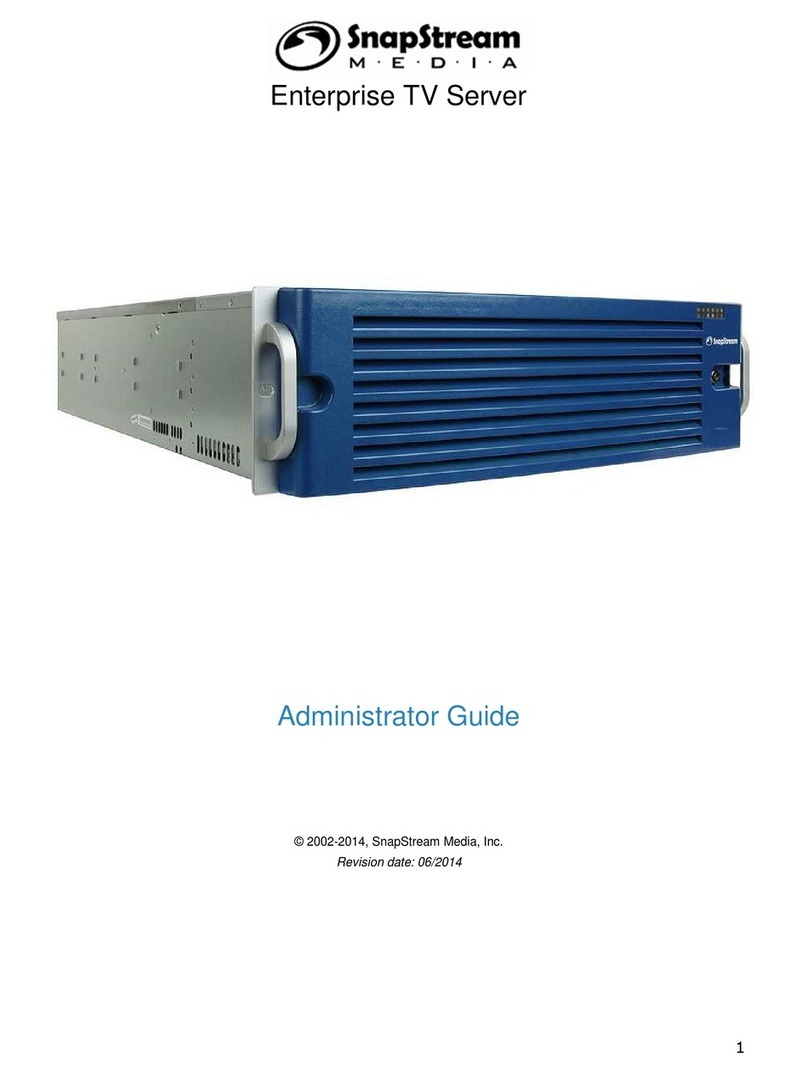
SnapStream Media
SnapStream Media Enterprise TV Server Administrator's guide
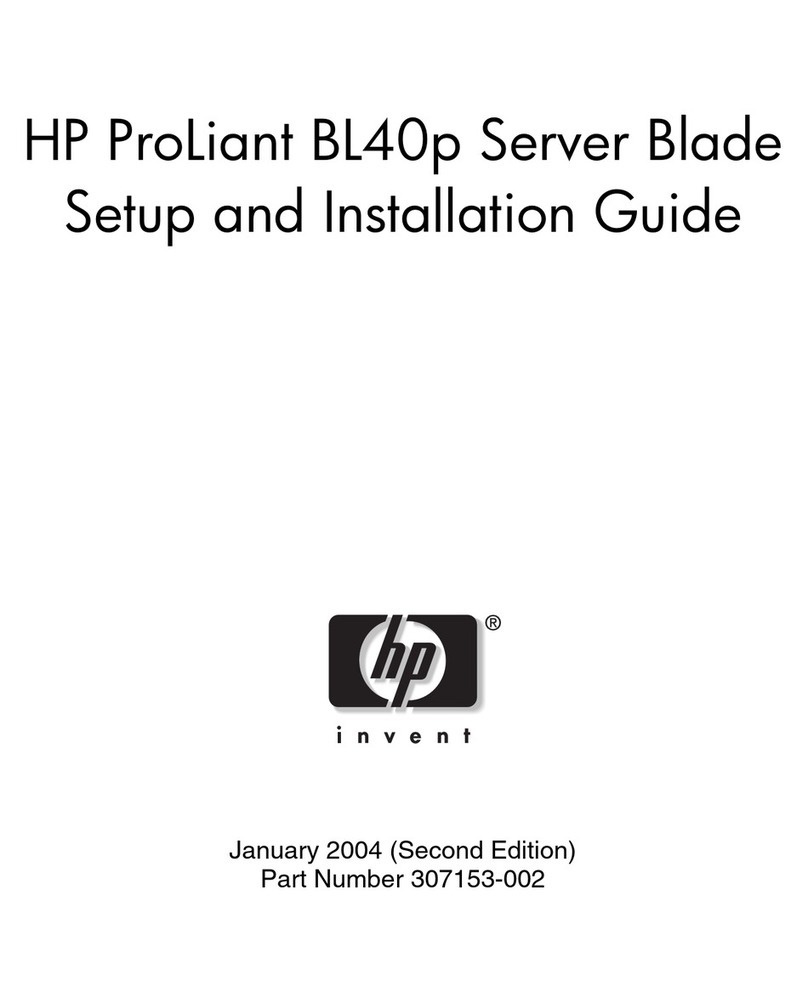
HP
HP ProLiant BL40p Setup and installation guide
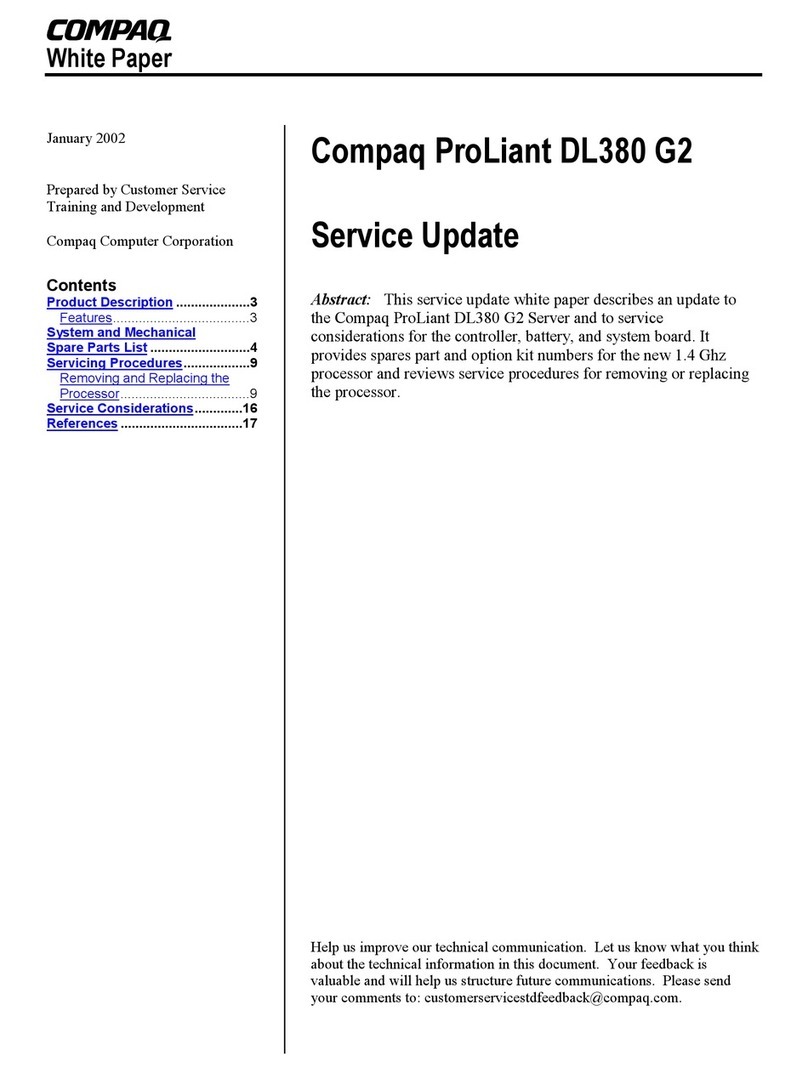
Compaq
Compaq ProLiant DL380 G2 Service update guide
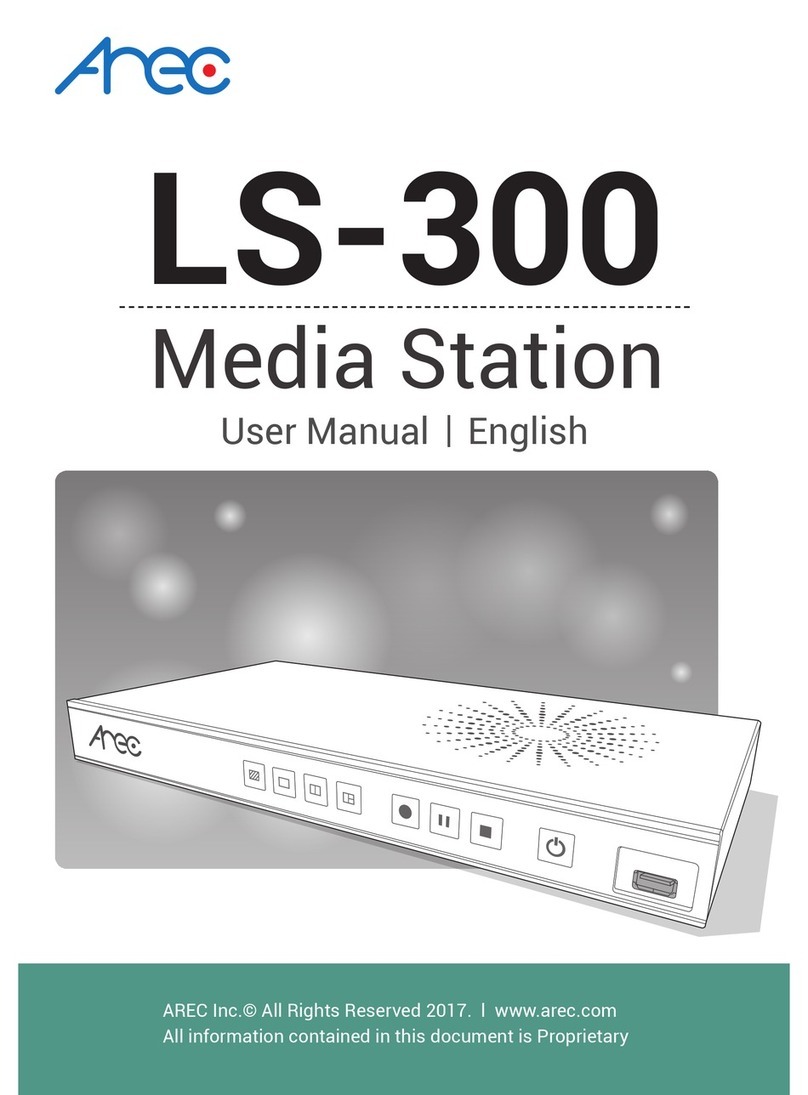
Arec
Arec LS-300 user manual
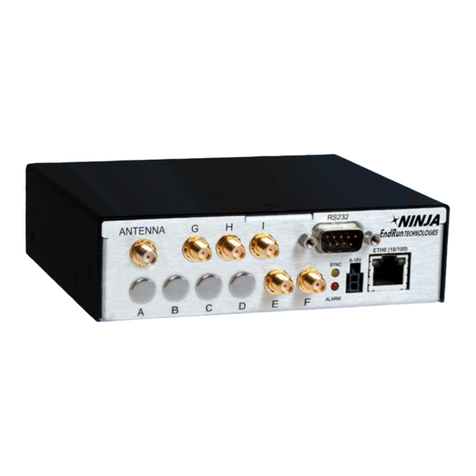
EndRun
EndRun Ninja user manual
